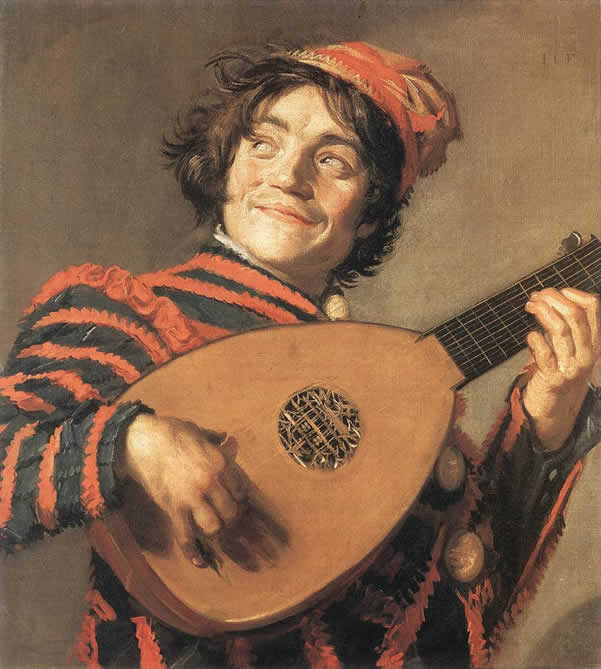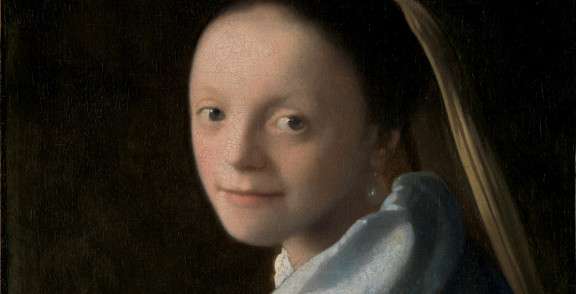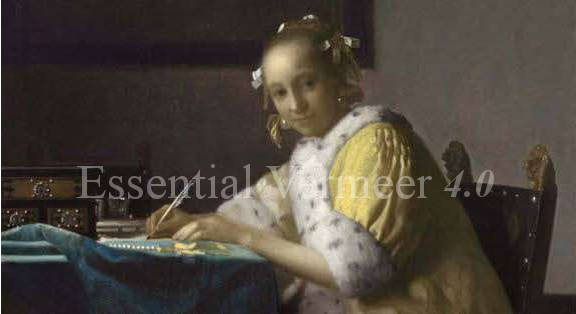Buffoon Playing a Lute
Frans Halsc. 1623
Oil on canvas, 70 × 62 cm.
Musée du Louvre, Paris

Frans HALS
Antwerp (?) c. 1580 (?)–Haarlem 1666
There is no known record of the time and place of Frans Hals's birth. His father was a cloth-worker from Mechelen and his mother came from Antwerp. According to one tradition Frans was 85 when he died, which would make the year of his birth 1580 or 1581; another report states that he was born in 1584. As his parents moved from Mechelen to Antwerp about 1581 his beginnings are quite obscure. They continue in obscurity for a good many years. His parents were in Antwerp in 1585 and in Haarlem by 1591, where Frans's younger brother, Dirck (who also became a painter), was baptized on 19 March. Theirs was one of the more than 600 families of Flemish textile workers who left the south for Haarlem after 1585. Nothing certain is known, either, about Hals's training or his early work. He is reputed to have been the pupil of the painter, historian and poet, Carel van Mander, but this is not confirmed in any second source, and there seems to be no trace of van Mander's influence on Hals's style. But then, no work can be attributed to him with any certainty before 1611, when he was not younger than twenty-six and probably nearer thirty.
He joined the Guild of Saint Luke in Haarlem in 1610 and married about the same time. His first child, Harmen, who also grew up to be a painter, was born in 1611 and in 1615 his wife died, leaving him with two children. She was buried in a pauper's grave, which is the first evidence of what has become established as Hals's financial condition. In 1617, Hals remarried. The banns were published on 15 January, the ceremony was on 12 February and a daughter, Sara, was baptized on 21 February. Hals's second wife, who was illiterate, bare him at least eight children and lived to be over eighty, surviving him by eight years. Three of Hals's sons by this marriage became painters, Frans Fransz. Hals the Younger, Reynier Fransz. Hals and Nicolaes Fransz. Hals. There was also Johannes Fransz. Hals (who was also a painter), but it is not certain whether he was of the first or second marriage. Counting sons, brothers and a nephew, there were nine members of the family, all named Hals, who were painters. Frans Hals began to make his reputation as a portrait-painter in 1616, when he was commissioned to paint the Banquet of the Officers of the St George Militia Company. But portrait painters were not held in very high esteem in Hals's day. Although he received commissions and trained apprentices or pupils, he was never widely famed and his finances were always precarious. His refusal to travel to Amsterdam to finish a group portrait of a militia company in the 1630s suggests that his frequent money troubles were of his own making. (The nineteenth-century tradition that he was also a drunkard and wife-beater was, however, a case of mistaken identity. The document probably referred to a Haarlem weaver of the same name.) Bills were unpaid: in 1635 he failed to pay his guild dues.
Other troubles followed. In 1642 his son Pieter was committed to an institution because he was dangerous, and in the same year his daughter Sara had an illegitimate child. In 1654 a baker seized his property to settle a bad debt. In 1661 the Guild exempted him from payment of the annual dues. In 1663 and in the years that followed he received a grant from the municipality. In 1664, at his request, he was given three cartloads of peat. He died on 29 August, 1666 in his mid-eighties and on 1 September was buried in the choir of St Bavo's Church in Haarlem.
- Willem van Aelst (2)
- Balthasar van der Ast (6)
- Hendrick Avercamp (3)
- Dirck van Baburen (7)
- Jacob Adriaenz. Backer (3)
- David Bailly
- Ludolf Bakhuysen
- Bartholomeus van Bassen
- Cornelis Bega
- Gerrit Berckheyde (2)
- Gillis Gillisz de Bergh
- Jan van Bijlert (7)
- Jan de Bisschop (2)
- Abraham Bloemaert (4)
- Pieter De Bloot
- Ferdinand Bol (3)
- Hans Bollinger
- Paulus Bor (2)
- Ambrosio Bosschaert (7)
- Jan Both
- Leonaert Bramer (4)
- Salomon de Bray (2)
- Quiringh van Brekelenkam (4)
- Jan Gerritszoon van Bronchorst (2)
- Adriaen Brouwer (5)
- Hendrick ter Brugghen (6)
- Hendrick van der Burch (5)
- Willem Buytewech (6)
- Abraham van Calraet (2)
- Jacob van Campen
- Jan van de Cappelle(3)
- Pieter Claesz (4)
- Pieter Codde (6)
- Adriaen Coorte (9)
- Josse van Craesbeeck (2)
- Aelbert Cuyp (6)
- Philip van Dijk
- Gerrit Dou (10)
- Willem Drost (2)
- Hendrick Dubbels
- Jacob Duck (4)
- Karel Dujardin (3)
- Willem Duyster (5)
- Gerbrand van den Eeckhout
- Pieter Jansens Elinga
- Cesar van Everdingen (5)
- Allaert van Everdingen
- Carel Fabritius (5)
- Goveart Flinck
- Frans Francken the Younger
- Aert de Gelder
- Cornelis Gijsbrechts
- Jan van Goyen (6)
- Frans Hals (3)
- Dirck Hals (5)
- Jan Davidsz. Heem (6)
- Maerten van Heemskerck
- Bartholomeus van der Helst (4)
- Jan van der Heyden (8)
- Meyndert Hobbema (3)
- Gerard van Honthorst (8)
- Pieter de Hooch (12)
- Van Hoogstraten (9)
- Gerard Houckgeest (4)
- Jan van Huysum (3)
- Willem Kalf (4)
- Jan van Kessel
- Philip Koninck (2)
- Gérard de Lairesse (5)
- Pieter Lastman
- Judith Jansdochter Leyster (5)
- Jan Lievens (4)
- Jacob van Loo (7)
- Nicolaes Maes (9)
- Cornelis de Man (5)
- Gabriel Metsu (12)
- Michiel Janz. van Mierevelt (3)
- Frans van Mieris (8)
- Jan Miense Molenaer (5)
- Pieter Molijn (2)
- Paulus Moreelse (2)
- Pieter Mulier
- Michiel van Musscher (5)
- Aert van der Neer (3)
- Eglon van der Neer (3)
- Caspar Netscher (5)
- Jacob Ochervelt (8)
- Jacob van Oost (2)
- Adriaen van Ostade (5)
- Antonie Palamedesz (6)
- Adam Pijnacker (5)
- Egbert van der Poel (2)
- Jan Porcellis (4)
- Pieter Symonz. Potter
- Paulus Potter (7)
- Pieter Jansz. Quast (2)
- Rembrandt van Rijn (complete oeuvre)
- Jacob van Ruisdael (8)
- Solomon van Ruisdael (7)
- Rachel Ruysch (2)
- Pieter Saenredam (3)
- Godfried Schalcken (6)
- Hercules Segers (2)
- Hendrick Sorg (4)
- Jan Steen (8)
- Harmen Steenwyck (3)
- Matthias Stom (2)
- Michael Sweerts (6)
- David Teniers the Younger
- Gerrit ter Borch (15)
- Willem van de Velde (7)
- Jacob van Velsen
- Johannes Verkolje (2)
- Jan Cornelisz Verspronck (4)
- Abraham de Verwer
- Simon de Vlieger
- Hendrick van Vliet (2)
- Daniel Vosmaer (4)
- Jacobus Vrel (8)
- Jacob van Walscapelle (2)
- Jan Baptist Weenix (2)
- Jan Wijnants (3)
- Emanuel de Witte (6)
- Philips Wouwermans (2)




 or anything else that isn't working as it should be, I'd love to hear it! Please write me at:
or anything else that isn't working as it should be, I'd love to hear it! Please write me at: